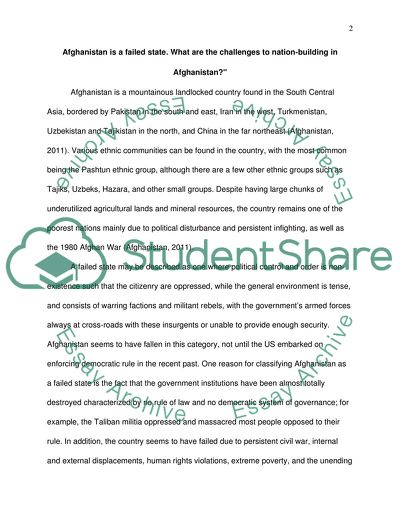Cite this document
(Afghanistan as a Failed State Assignment Example | Topics and Well Written Essays - 2500 words, n.d.)
Afghanistan as a Failed State Assignment Example | Topics and Well Written Essays - 2500 words. Retrieved from https://studentshare.org/politics/1752307-afghanistan-is-a-failed-state-what-are-the-challenges-to-nation-building-in-afghanistan
Afghanistan as a Failed State Assignment Example | Topics and Well Written Essays - 2500 words. Retrieved from https://studentshare.org/politics/1752307-afghanistan-is-a-failed-state-what-are-the-challenges-to-nation-building-in-afghanistan
(Afghanistan As a Failed State Assignment Example | Topics and Well Written Essays - 2500 Words)
Afghanistan As a Failed State Assignment Example | Topics and Well Written Essays - 2500 Words. https://studentshare.org/politics/1752307-afghanistan-is-a-failed-state-what-are-the-challenges-to-nation-building-in-afghanistan.
Afghanistan As a Failed State Assignment Example | Topics and Well Written Essays - 2500 Words. https://studentshare.org/politics/1752307-afghanistan-is-a-failed-state-what-are-the-challenges-to-nation-building-in-afghanistan.
“Afghanistan As a Failed State Assignment Example | Topics and Well Written Essays - 2500 Words”, n.d. https://studentshare.org/politics/1752307-afghanistan-is-a-failed-state-what-are-the-challenges-to-nation-building-in-afghanistan.


